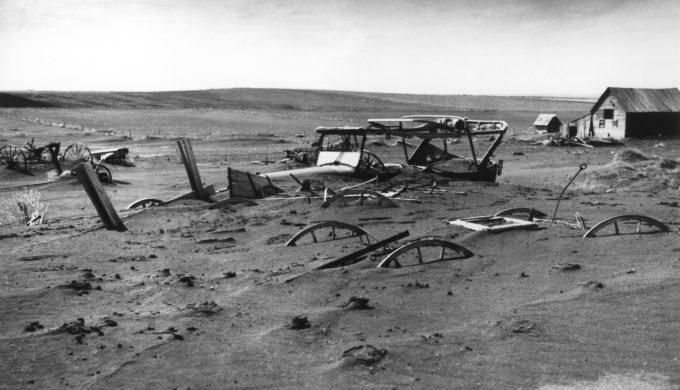On April 14, 1935, a severe dust storm hit parts of Oklahoma and Texas, causing tremendous damage not only to the landscape but to the residents and the economy. It has since been referred to as “Black Sunday,” with respect to its ominous nature. Known as one of the worst dust storms in U.S. history, it ravaged a portion of what would be known as the “Dust Bowl,” which referenced western Kansas, southeast Colorado, as well as the Oklahoma and Texas Panhandles, and it was estimated to have displaced topsoil measured at 300 million tons. Eyewitness accounts give the impression that it can only be likened to a land-based tsunami in today’s weather terms.
History
The Legendary Black Sunday Dust Storm that Hit Texas

Photo: Wikipedia
At the time, settlers of the area were already struggling through the Great Depression. Years of drought compounded the issue, and dust storms were relentless. This particular storm was considered so significant, its blackness was said to have turned a warm, sunny day into a cold, horrible absence of light said to be worse than the darkest night. With winds reaching 60 miles per hour, some said they lost the ability to even see their own hand in front of their faces. Famous songs were written of the event, capturing the detail and feeling of the time for audiences far and wide. On the day following the storm, the world would hear, for the first time, the term “The Dust Bowl,” referring to the region identified above.

Photo: Wikimedia Commons
That fateful afternoon, residents of these parts were forced to take shelter from the dust storm which was looming. Also called a “black blizzard,” the storm blew into Texas from the Oklahoma Panhandle, reaching Amarillo by approximately 7:20 p.m. p.m. Conditions were severe due to a combination of an eight-year drought, erosion, high winds, and bare soil. It gave rise to a dust cloud so intense that some who witnessed the event truly thought the world was coming to its end. The destruction which resulted from this, as well as its predecessors, caused hundreds of thousands to relocate, much of them flooding California. Details of this period in American history were captured poignantly in John Steinbeck’s best seller, “The Grapes of Wrath.” In response to the damage and relocation of large masses of people, Congress passed the Soil Conservation Act. In turn, this spawned the Soil Conservation Service (SCS) in an attempt to assist landowners and users in soil preservation and conservation efforts, becoming a permanent U.S. Department of Agriculture agency. The reduction of soil erosion, improvement of field and forest land, and the development of natural resources were bi-products of the SCS.



